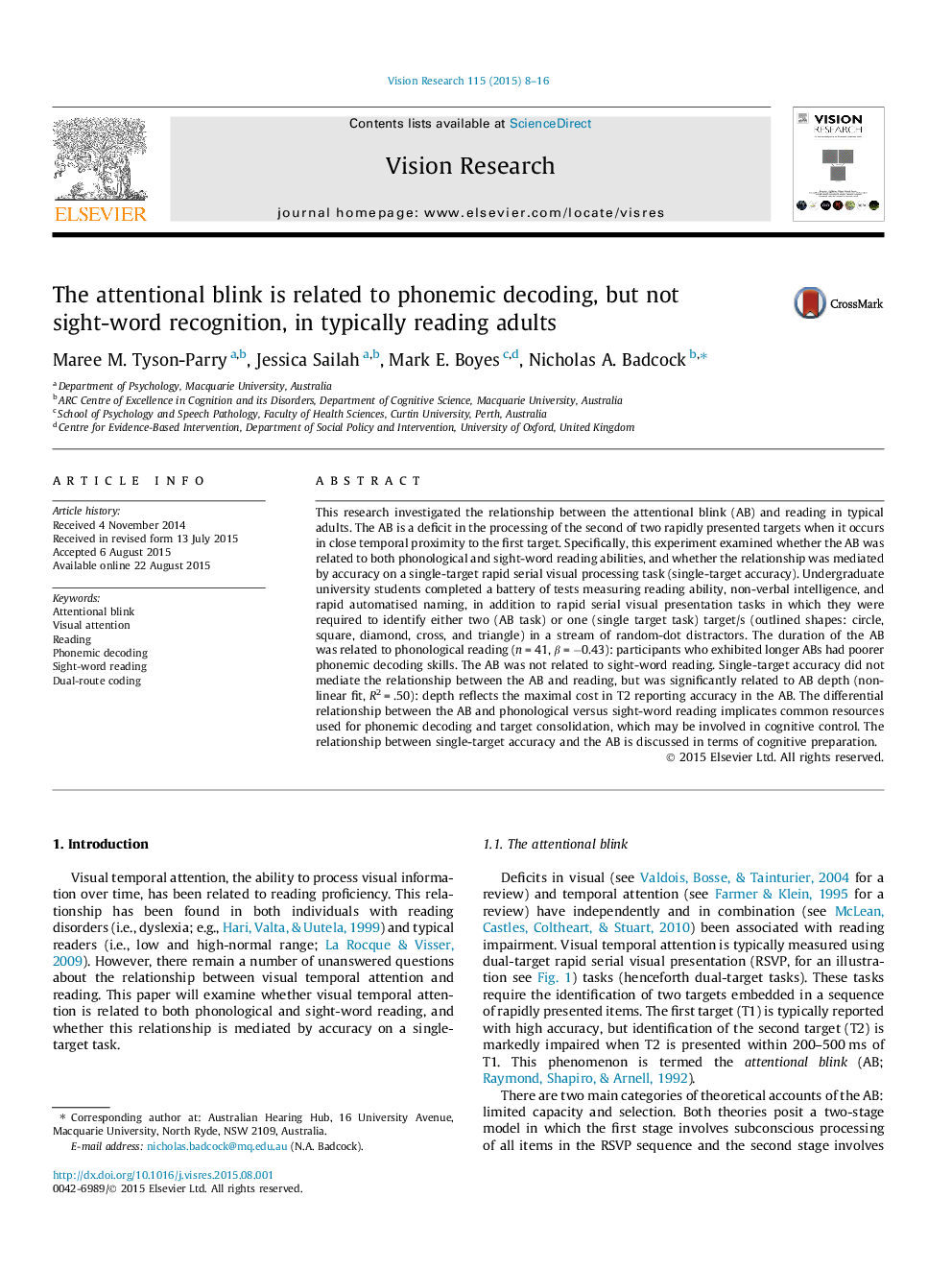| Article ID | Journal | Published Year | Pages | File Type |
|---|---|---|---|---|
| 6203123 | Vision Research | 2015 | 9 Pages |
This research investigated the relationship between the attentional blink (AB) and reading in typical adults. The AB is a deficit in the processing of the second of two rapidly presented targets when it occurs in close temporal proximity to the first target. Specifically, this experiment examined whether the AB was related to both phonological and sight-word reading abilities, and whether the relationship was mediated by accuracy on a single-target rapid serial visual processing task (single-target accuracy). Undergraduate university students completed a battery of tests measuring reading ability, non-verbal intelligence, and rapid automatised naming, in addition to rapid serial visual presentation tasks in which they were required to identify either two (AB task) or one (single target task) target/s (outlined shapes: circle, square, diamond, cross, and triangle) in a stream of random-dot distractors. The duration of the AB was related to phonological reading (n = 41, β = â0.43): participants who exhibited longer ABs had poorer phonemic decoding skills. The AB was not related to sight-word reading. Single-target accuracy did not mediate the relationship between the AB and reading, but was significantly related to AB depth (non-linear fit, R2 = .50): depth reflects the maximal cost in T2 reporting accuracy in the AB. The differential relationship between the AB and phonological versus sight-word reading implicates common resources used for phonemic decoding and target consolidation, which may be involved in cognitive control. The relationship between single-target accuracy and the AB is discussed in terms of cognitive preparation.
